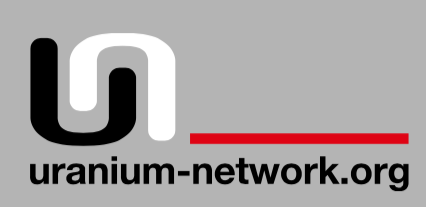Mining Worldwide
Sandra Inutiq’s speech at the GN public forum (2011, en)
March 20, 2011 I would like to talk about an important void in these discussions onmining, which is sustainability. Sustainability includes having aclear vision for Nunavut as a healthy ecosystem, a healthy and vibrantsociety that is strong in its cultural roots. The very basis of Inuitculture is sustainability which includes respect for all that isaround…
Read MoreIn defense of emotionalism, Makita responds (Nunatsiaq News, 2011, en)
letter to the editor Nunatsiaq News March 31, 2011 The editorial “On uranium, don’t look for simple answers” (March 28) asks “What, exactly, does … ‘political oppression’ consist of?” Oppression consists of residents of Baker Lake who voted to oppose the proposed Kiggavik uranium mine in a municipal plebiscite in 1990 — the only free…
Read MoreA vast canadian Wilderness poised for a Uranium Boom (Yale Environment, 2012, en)
30 JAN 2012: REPORT Canada’s Nunavut Territory is the largest undisturbed wilderness in the Northern Hemisphere. It also contains large deposits of uranium, generating intense interest from mining companies and raising concerns that a mining boom could harm the caribou at the center of Inuit life. by ed struzik Until her semi-nomadic…
Read MoreFrench Company pushes for uranium mine in the Canadian Arctic wilderness (2012, en)
by Rachel Cernansky Energy / Energy Police January 30, 2012 If you travel to Nunavut, a territory in Canada that stretches from the mainland to nearly the North Pole, you can encounter—because it’s so remote and has so few roads—caribou herds migrating freely that are among the biggest in the world. Between 65,000 and 400,000 animals or more live…
Read MoreThe uranium controversy in Baker Lake (Indigenous Politics, 2012, en)
INDIGENOUS POLITICSWARREN BERNAUER | February 3rd 2012 Baker Lake is a small and mostly Inuit community. The only inland community in Nunavut, it is located west of Hudson Bay, near the geographic centre of Canada. Its Inuktitut name is Qamani’tuaq (“where the river widens”). Baker Lake is in what is referred to today as the…
Read MoreJapan nuclear crisis puts industry revival in doubt (guardian.co.uk,2011, en)
Disaster described as a colossal setback for industry at a time when climate change is sparking a renaissance by Suzanne Goldenberg in Washington, Fiona Harvey and John Vidalguardian.co.ukMarch 15, 2011 Events in Japan could kill the last chances of revival for an American nuclear industry struggling to emerge from the shadow of its own disaster…
Read MoreUranbbau in Kanada auf Gebiet der Cree und Dene (2004, ger)
Die weltgrößten Uranminen liegen im Norden der Provinz Saskatchewan, Canada. Die „First Nations” der Region haben sich von Anbeginn des Uranabbaus (vor mehr als 30 Jahren) gegen die Uranbergwerke ausgesprochen, ohne ihr Ziel – Anerkennung ihrer vertraglich gesicherten Landrechte und Stopp des Uranabbaus bzw. seine Eingrenzung – zu erreichen. Nach offiziellen Feststellungen eines Regierungsausschusses (FEARO-Panel)…
Read MoreTanzanian churches oppose uranium mining (Article)
by Fredrick Nzwili in Ecumental News International 18 June (ENInews)–Protestant churches in Tanzania have cautioned the government against extracting uranium deposits recently discovered in the East African country, noting that Germany plans to close its nuclear power stations by 2022 and the Japanese city of Fukushima is still recovering from the 2011 earthquake-caused nuclear disaster.…
Read MoreAbstract – Radiological hazards from uranium mining (crrirad.org)
Bruno Chareyron At all the French uranium mines where it made radiological surveys, the CRIIRAD laboratory discovered situations of environmental contamination and a lack of proper protection of the inhabitants against health risks due to ionizing radiation.
Read MoreAction for the preservation of the Selous Game Reserve in Tanzania (Report enclosed)
Uranium-network.org has published a detailed report on the situation in the Selous Game Reserve in Tanzania, concerning the planned Mkuju River Uranium Project. The UNESCO world heritage center soon decides on the requested change of boundaries. If that change goes through, the uranium mine will be built, directly nearby the worlds largest remaining wild elephant…
Read More